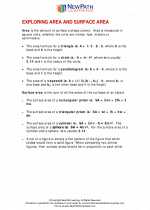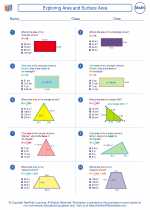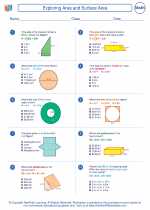Absolute Value Function
The absolute value function is a mathematical function that gives the distance of a number from zero on the number line. The absolute value of a number "x" is denoted as |x| and is defined as follows:
If x is greater than or equal to 0, then |x| = x
If x is less than 0, then |x| = -x
Graph of the Absolute Value Function
The graph of the absolute value function is a V-shaped graph with its vertex at the origin (0, 0). The graph extends upwards and downwards from the vertex, reflecting the absolute value property that the distance from 0 is always positive.
Properties of the Absolute Value Function
- The absolute value function is always non-negative.
- The absolute value function is an even function, meaning it is symmetric about the y-axis.
- The absolute value function is piecewise-defined, with different rules for positive and negative input values.
Examples
1. Find the absolute value of -5:
|(-5)| = 5
2. Find the absolute value of 8:
|8| = 8
Applications
The absolute value function has numerous real-world applications, such as in measuring distances, calculating differences, and optimizing solutions in various fields including physics, engineering, and economics.
Study Guide
When studying the absolute value function, it's important to understand the following key concepts:
- Definition of absolute value and its properties
- Graphing the absolute value function
- Identifying the domain and range of the absolute value function
- Solving absolute value equations and inequalities
Additionally, practicing with different examples and applications of the absolute value function will help reinforce your understanding of the topic.
Remember to pay attention to the piecewise nature of the absolute value function and how it behaves for different input values.
Now you should be well-equipped to understand and work with the absolute value function in your math studies!
.◂Math Worksheets and Study Guides Seventh Grade. Exploring Area and Surface Area

 Worksheet/Answer key
Worksheet/Answer key
 Worksheet/Answer key
Worksheet/Answer key
 Worksheet/Answer key
Worksheet/Answer key
 Worksheet/Answer key
Worksheet/Answer key
